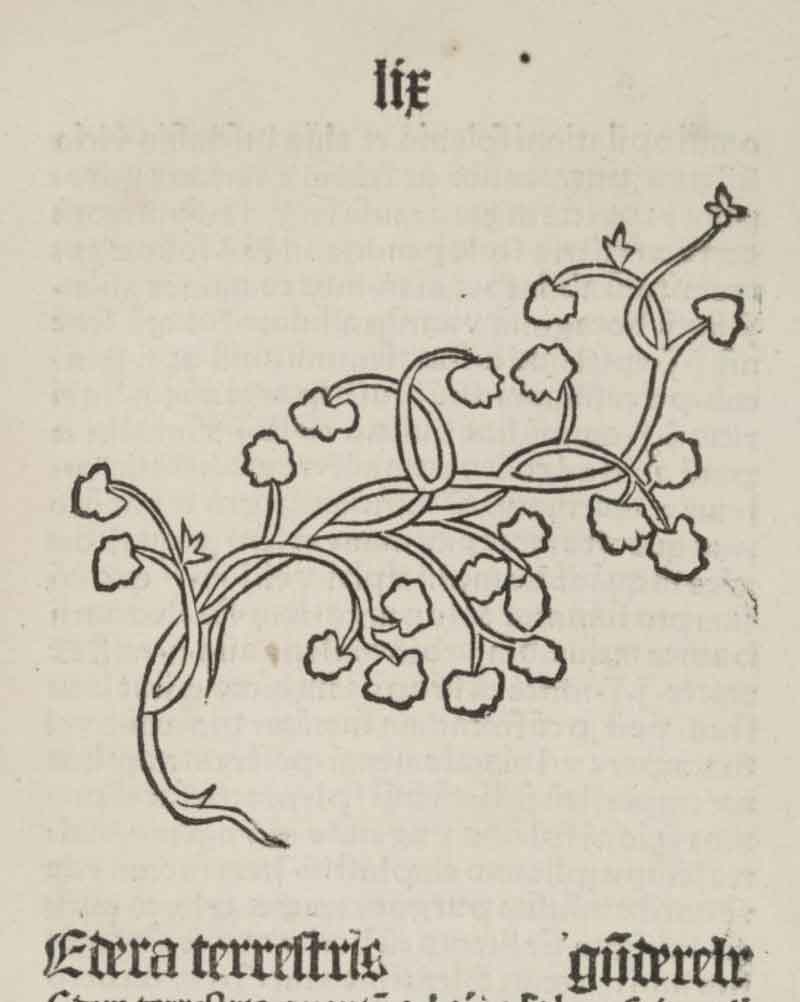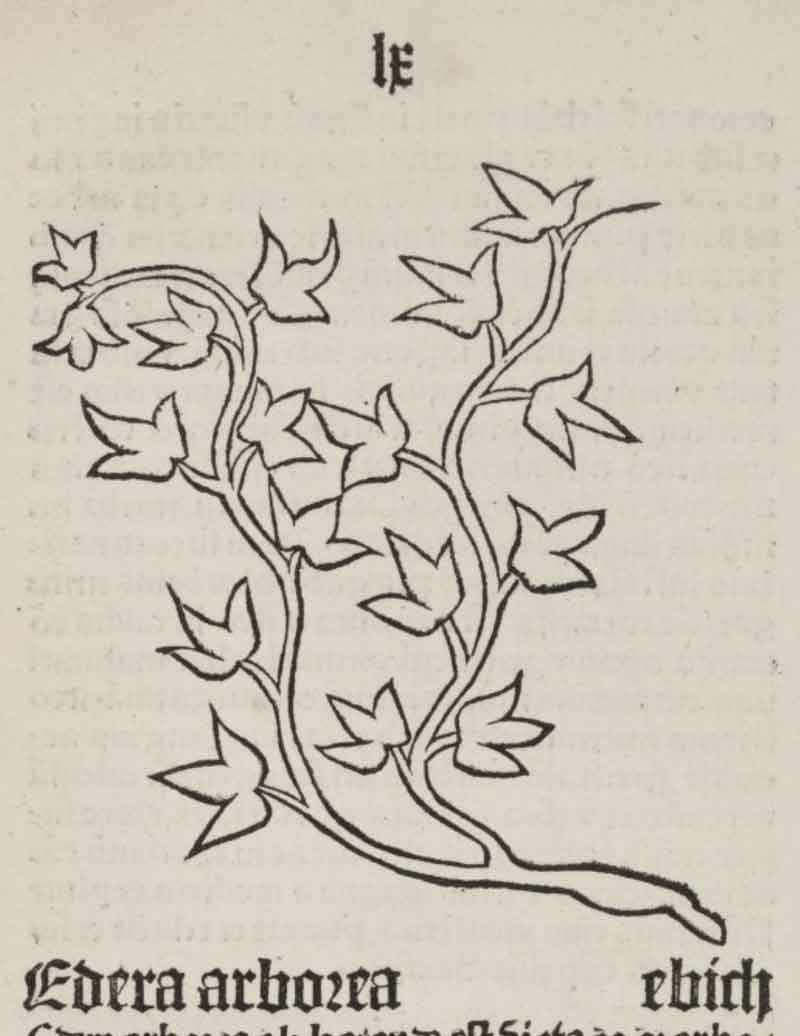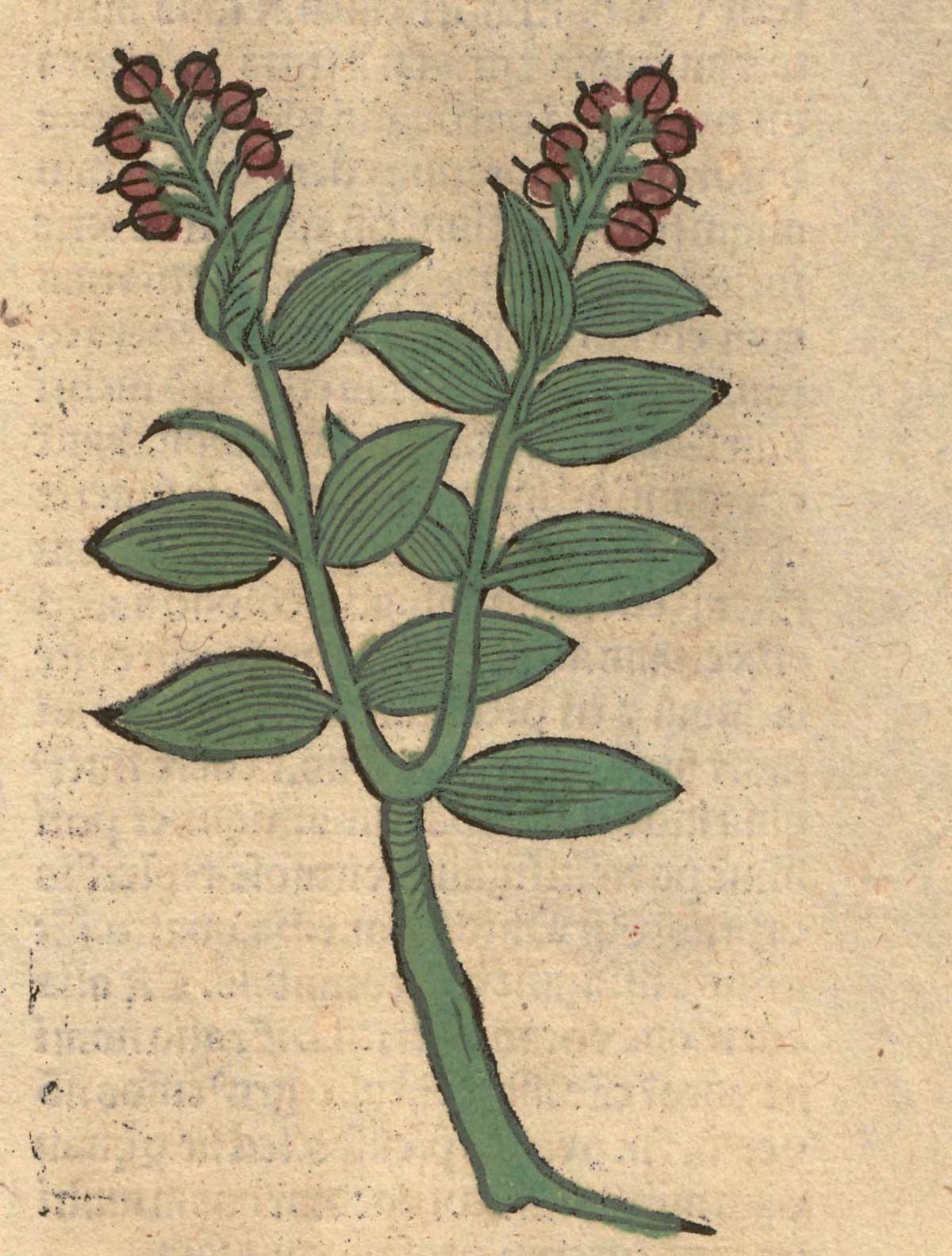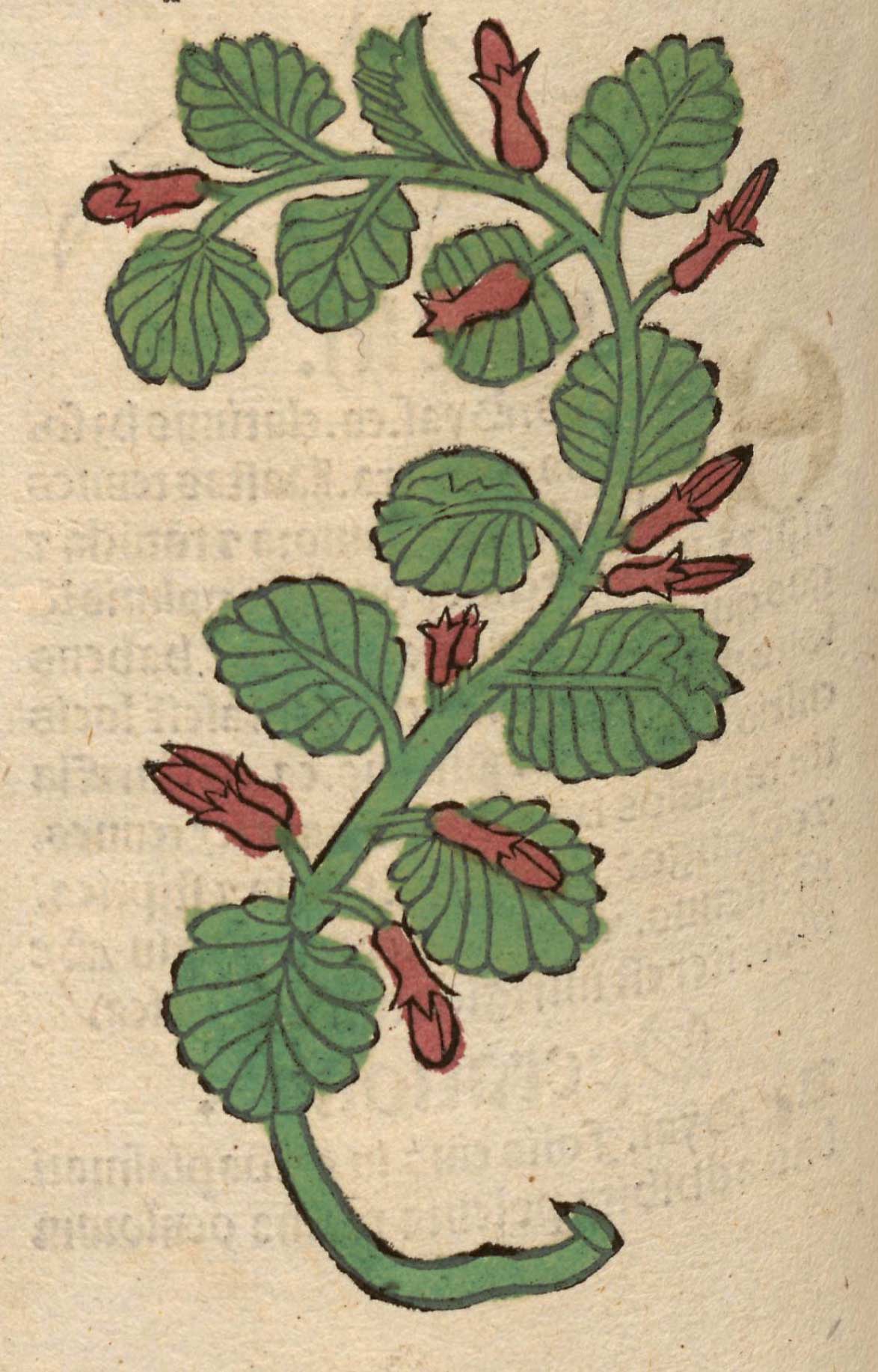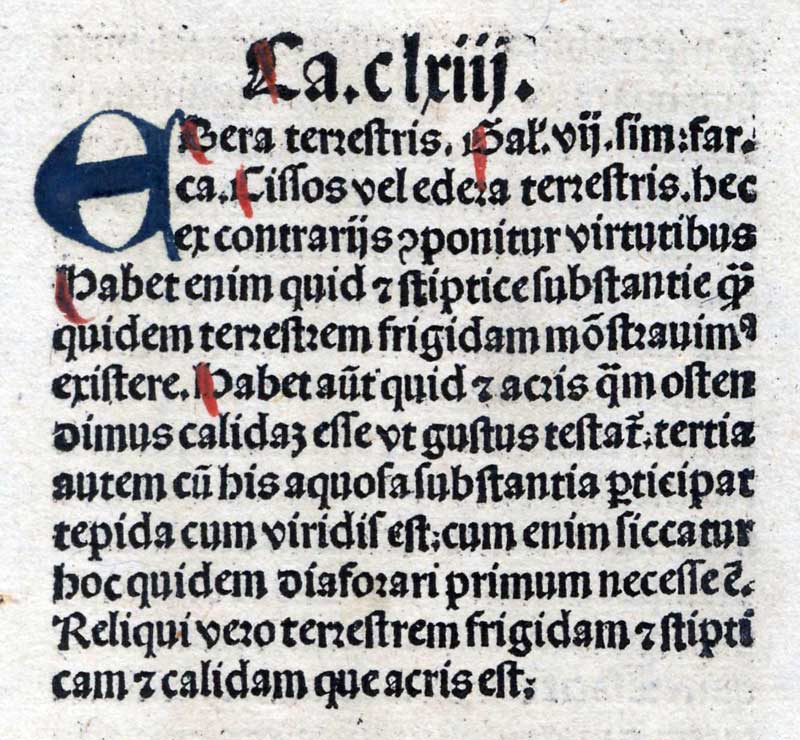Among the examples of pairings whose antipathies are not as vehement as the hatred thieves have of a certain usage of Pantagruelion.
The section from “La presle aux fauscheurs” (horse-tail to mowers) to “le Lierre aux Murailles” (ivy to walls) was added in the 1552 edition.
Notes
Edera terrestris
Edera arborea
Edera arborea
Edera arborea (text)
Edera terrestris
Edera terrestris (text)
Hedera helix
ivy to walls
Pliny xvi. 34, § 62.
ivy to walls
Hedera iam dicitur in Asia nasci. circiter urbis Romae annum ccccxxxx negaverat Theophrastus, nec in India nisi in monte Mero, quin et Harpalum omni modo laborasse ut sereret eam in Medis frustra, Alexandrum vero ob raritatem ita coronato exercitu victorem ex India redisse exemplo Liberi patris; cuius dei et nunc adornat thyrsos galeasque etiam ac scuta in Thraciae populis sollemnibus sacris, inimica arboribus satisque omnibus, sepulchra, muros rumpens, serpentium frigori gratissima, ut mirum sit ullum honorem habitum ei.
It is said that ivy now grows in Asia Minor. Theophrastus about 314 b.c. had stated that it did not grow there, nor yet in India except on Mount Meros, and indeed that Harpalus had used every effort to grow it in Media without success, while Alexander had come back victorious from India with his army wearing wreaths of ivy, because of its rarity, in imitation of Father Liber; and it is even now used at solemn festivals among the peoples of Thrace to decorate the wands of that god, and also the worshippers’ helmets and shields, although it is injurious to all trees and plants and destructive to tombs and walls, and very agreeable to chilly snakes, so that it is surprising that any honour has been paid to it.
lierre aux murailles
Lierre, Hedera helix L., hédéracée qui, par ses racines adventices, s’arroche aux vieux murs. «Inimica… omnibus: sepulcra, muros rumpens», dit Pline, XVI, 62. (Paul Delaunay)
le lierre
Voir Pline, XVI, 62 (EC).
ivy
ivy . Forms: ivi, yvi, yve, yvy, ivye, ivie, yvie, (ive), ivy. [Old English ífi, obscurely related to Old High German ebahewi, ebawi, ebah. The first element of these appears to be an Old Teutonic *iba, of which no cognates are known. The second element in Old High German is apparently hewi, Middle High German höu, German heu hay; Kluge suggests that Old English ífi may similarly go back to an earlier fhe. But no explanation appears of the connexion with `hay’.]
A well-known climbing evergreen shrub (Hedera Helix), indigenous to Europe and parts of Asia and Africa, having dark-green shining leaves, usually five-angled, and bearing umbels of greenish-yellow flowers, succeeded by dark berries; it is a favourite ornamental covering of walls, old buildings, ruins, etc. The plant was anciently sacred to Bacchus.
A. 800 Leiden Gloss. 44 Hederam, ibaei. Erfurt Gloss. 392 Hedera, ife&asg…
C. 1000 in Cockayne Shrine 139/27 Weal se is mid ifi&asg.e bewri&asg.en.
C. 1000 Sax. Leechdoms, Wortcunning, and Starcraft of Early England I. 212 Eorð yfi&asg… .þysse wyrte þe man hederan nigran and oþrum naman eorð ifi&asg. nemneþ.
A. 1250 Owl & Night. 27 On old stoc… was mid ivi al bi-growe.
1398 John de Trevisa Bartholomeus De proprietatibus rerus xvii. liii. (Bodl. MS.), Oftyn Poetes were crowned with Iuye: in token of noble witte & scharpe, for the yuye is alwei grene.
1578 Henry Lyte, tr. Dodoens’ Niewe herball or historie of plantes iii. xlix. 387 The blacke Iuye hath harde wooddy branches.
1597 John Gerard (or Gerarde) The herball, or general historie of plants ii. ccci. 708 Creeping or barren Iuie is called… in English ground Iuie.
Used as a sign that wine was sold within; compare ivy-garland and ivy-bush. Obsolete
1436 Pol. Poems (Rolls) II. 183 What nedeth a garlande, whyche is made of ivye, Shew a tavern wynelesse, also thryve I.
14… Why I can’t be a Nun 358 in E.E.P. (1862) 147 A fayre garlond of yve grene Whyche hangeth at a taverne dore, Hyt ys a false token as I wene, But yf there be wyne gode and sewer.
1612 W. Parkes Curtaine-Dr. (1876) 37 The Iuy is hung out in almost euery place, and open market, kept as vnder the allowance of authority.
